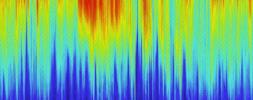The SNMREC Preferred Partner Program is an opportunity for our industry partners to collaborate more fully with the Center. This program is designed to dedicate SNMREC experts and resources to individual industry partner development needs.
Publication TR-11-172
Reference: Singh, A.J. and M. Arockiasamy, 2011: Mathematical modeling and numerical simulation of fluid flow effects on marine current turbines. Proceedings of the ASME 2011 30th International Conference on Ocean, Offshore and Arctic Engineering, June 19-24, 2011, Rotterdam, The Netherlands. OMAE2011-50325
Abstract: This paper presents a numerical model to study the fluid flow effects in an idealized, full scale marine current turbine. The effect of changing fluid flow conditions on the operation and structural integrity of a marine current turbine is of utmost importance in designing the shape, size and composition of the turbine blade. The model uses the measured current velocity offshore the coast of Ft. Lauderdale, Florida. A probability distribution function is used to describe the probability of exceedance of the current velocity. The effects of free surface, kinematic viscosity and pitch angle are considered in this study. The turbine rotor is modeled using a 3D computer aided design (CAD) tool, SolidWorks. The rotor and the computational domain are meshed using geometric mesh generation software, ANSYS ICEM CFD. ANSYS FLUENT software is used to model the fluid flow interactions by solving the conservation equations for mass and momentum, considering non-uniform inflows and turbulence. The model will provide a methodology for predicting the lift and drag coefficients, bending moments and center of pressure in the turbine rotor. The results from this study can be used to predict the fatigue life of a turbine blade based on the statistical data of the current profile at a particular location. Furthermore, the estimation of power generation and efficiency of the turbine can be calculated to provide the information needed to evaluate the feasibility and economics of the energy converter.



